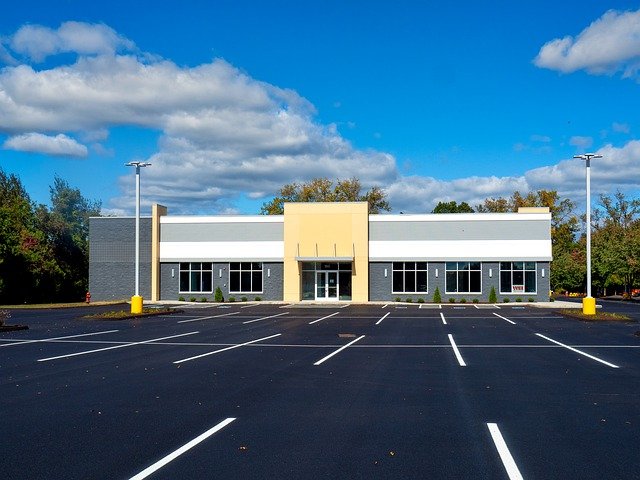8 pointers when investing in commercial property

Malaysians generally restrict themselves to residential properties when investing in real estate.
But commercial properties are worth exploring too because their sale and equity gains are much greater, although the risks may be higher.
Because of this, commercial property may have substantial cash flow advantages, higher rent protection due to longer leases and less ongoing expenses.
1. Location
There are always preferred and less popular micro-markets for commercial leasing or purchase as well as many other variables that should be carefully assessed – accessibility, proximity to key hubs and planned improvements in infrastructure.
If an established micro-market is starting to show saturation and if the infrastructure and other criteria are supported, an “emerging” corridor may be worth a look.
This not only makes for a successful investment but can also ensure long-term capital appreciation.
When investing in residential property, location is the most significant element. You need to select the place with a higher target market.
The distance between the end user and suppliers for efficient accessibility is also important to remember. To run a company successfully, connectivity via road, rail or water transport is also needed.
2. Continual marketability
A good building should be able to survive churn and always be ready for new tenants and possibilities, such as a building with superior technology that is similar to current design and structure trends.
Factors such as a green building certification are a bonus. Environmentally sustainable and energy-efficient utilities should be included.
If the building is multi-tenanted, the management of the common areas needs to be top-notch and professionally handled.
The Corpus Fund should be operated separately to handle maintenance requirements or to repair capital equipment.
Moreover, before placing pen to paper, the community area maintenance and management should be fully understood.
If you are purchasing a commercial property that has already been developed, ask the owner about the type of company being operated and why they are selling it.
Get an idea of the wear and tear on the property and the maintenance required in the future by visiting the property.
Knowing the possible resale value or potential rent that can be received in the future is also important.

3. Amenities
Check if the critical facilities, such as parking spaces, lifts, security and so on, are there. They will not only help in operating a business but will also add to the resale value in the future or achieve a better rental rate.
The benefits of such facilities in a building appear to override the cost. If there is a possibility of paying up for better facilities as a marketing differentiator, go for it. For example, purchasing dedicated parking spaces in front of a commercial lot.
The presence of surrounding amenities would boost the marketability of the space, say a food court or retail, and it would be a good idea to invest in such alternatives.
4. Documentation
As part of due diligence, all title-related records, licences, building permits, taxes, utility bills and so on should be carefully reviewed by a senior legal official.
A detailed understanding of the contract, particularly the covenants/obligations of the lessor, should be undertaken if the property is tenanted.
This will make sure there are no surprises. Checking for the existence of mortgages secured against the property is also important.
5. Market dynamics
It will help to understand current trends, the real market results over the past three to five years, the projected outlook, tenant profile and vintage, rent rolls and any other data that would provide insight about the financials of a building as this would be yet another numbers game.
It is important to understand the lease contract if the property has a tenant, particularly details such as lease expiry, lock-in date, escalations and so on.
A good real estate agent should be engaged to allow well-informed decision-making.

6. Competing supply
Occasionally, development cycles contribute to an oversupply of commercial properties.
An examination of new building permits and other housing statistics can give a feeling as to whether the property is in a reasonably stable market or one where competitive properties are likely to come online soon.
Local or regional regulations such as zoning, building codes and environmental impact assessments and fees also affect construction.
Such constraints can cause local price inflation to be higher than in other areas over the long term.
7. Vacancy rates
Complexes with vacancy rates of more than 7% to 8% tend to be in an adverse business area or in need of rehabilitation or other repositioning. However, these negatives are often clearly due to bad management.
Multi-tenanted buildings are management-intensive, and tenant relationships, proper care and the display and leasing of space are core elements of the duties of the property manager.
An analysis of current and historical rates of occupancy, both for property and for comparable properties in the area, may give an investor a clearer understanding of the future competitiveness of a property.
8. Interest rates
Typically, investors borrow money from the bank to fund their investments. If interest rates go up, it costs more to borrow. But there’s a need to take a look at the broader picture.
First, because of changes in economic conditions, interest rates are rising.
Second, increasing interest rates correlate with inflation, which means higher prices for goods and services, implying that commercial real estate is more costly.
This article first appeared in MyPF Follow MyPF to simplify and grow your personal finances on Facebook and Instagram.
Source: FMT News















POST YOUR COMMENTS